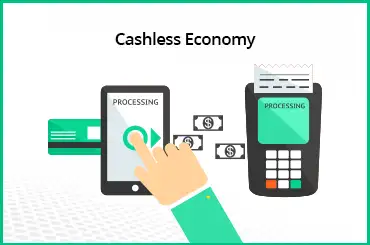The elasticity of demand is highly relevant to you if you are a wholesaler, retailer, or manufacturer, with the goal of increasing sales for enhancing profits. This economic measure tells the sellers how the demand will change with a change in price and other economic factors.
Financial experts suggest that business owners must know about various types of elasticity of demand when devising new pricing and other business strategies. In this article, we have explained the elasticity of demand, the types of elasticity of demand, and how to calculate the elasticity of demand. If you'd like to know more about this topic, continue reading!
What Is Elasticity of Demand?
The ratio between the percentage of change in any variable that affects demand, such as price, and the quantity of demand is known as the elasticity of demand.
Businesses keep updating their business strategies and policies from time to time for enhancement in the growth of the company. Here, the price of the product is a key factor that has a direct impact on sales. There are many other important factors that affect sales.
Buying trends of customers are subject to change based on their preferences and price changes. If you want your business to grow and flourish steadily, then observing these changes can help to a great extent in making effective strategies.
Apart from the price of a commodity, income levels, consumer preferences and inclinations are a few factors that affect the elasticity of demand.
Types of Elasticity of Demand
Let's take a look at the various types of elasticity of demand on the basis amount of change:
Elastic Demand
Price is said to be completely elastic when even a small change in price results in a significant shift in demand. In these circumstances, even a slight price increase can cause the demand to collapse, and vice versa.
Inelastic Demand
Inelastic demand is when despite price changes, the demand still persists, or the change is very slight. This is applicable in the case of essential commodities like salt and fuel. When the price does not impact the quantity demanded, then it is perfectly inelastic demand.
Unitary Elastic Demand
This is when the percentage change in price leads to the exact same change in demand. In this type, the elasticity coefficient is calculated as one. For example, a 10% change in price results in a 10% change in demand quantity.
Besides the ones discussed above, there are other types of elasticity of demand based on different factors. Let's understand them below -
Price Elasticity of Demand
The most common elasticity of demand is linked to price. In simple words, the change in the price of certain products comes with certain responsiveness from the buyers. The drop or jump in product prices depends on the investment strategies, competitiveness in the market, and season of sale.
Income Elasticity of Demand
The income elasticity of demand is a sensitive entity that deals with the income levels of the consumers. For example, in metros where people have a higher scale of income, the demand for leisure and luxury products is high.
Cross Elasticity of Demand
When it comes to the cross elasticity of demand in the market, you must be certain about the price changes of similar products sold by competitors. You will need to set your price to match your competitors' pricing to keep the sales going else the demand for your goods would dip.
How to Calculate Elasticity of Demand?
Price elasticity is a term economists use to describe how price variations affect the supply and demand of goods. The quantity demanded of a product divided by the price change of the same product is used to calculate the price elasticity of demand.
This ratio allows economists to gauge how responsive consumers are to price changes, which can help them with pricing decisions and trend forecasts.
Here is the elasticity of demand formula:
Price Elasticity of Demand = Percentage Change in Demanded Quantity / Percentage Change in Price.
Example:
A company sells mobile phone covers for Rs. 200 each. In the month of January, they sold 8,000 pieces. They reduced the price to Rs. 125 the next month and sales increased to 10,000. The percent change in quantity can be calculated by dividing the change in quantity by the new quantity: 2000/10000 = 0.2 The percent change in price can be calculated by dividing the change in the price by the original price: 75/200 = 0.37
So, accordingly, the elasticity of demand would be 0.2/0.37=0.54
Monitor Demand Closely With an Automated Solution
As discussed, the concept of elasticity of demand refers to how responsive consumers are to changes in price, quality, and many other factors that influence demand. Therefore, the importance of elasticity of demand holds considerable significance for businesses.
Monitoring demand and similar key metrics gets significantly easier when you have a sophisticated software that presents data before you through smart dashboards. There are many such parameters and concepts that you can monitor via TranZact's cloud-based automation software designed to digitize manufacturing businesses!
FAQs on Elasticity of Demand
1. What are the factors affecting the Elasticity of Demand?
The key factors that you should be aware of while assessing the degree of responsiveness of demand are fluctuations in price, income, the period in which the price changes take place, substitute products availability, and type of product (essential or non-essential).
2. Is hiring a strategist or economist necessary to deal with the elasticity of demand?
Businesses may choose to hire strategists who understand and devise practical business strategies aiming at profitability. They may also choose to adopt advanced automation software that provides real-time insights on orders and inventory movements to plan the impact of elasticity of demand.
















